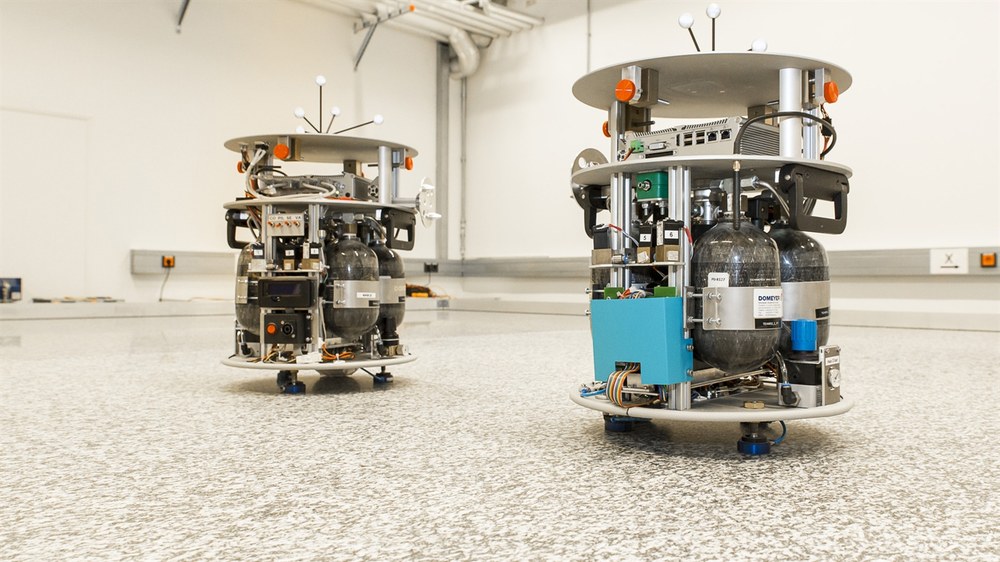TEAMS – Test Environment for Applications of Multiple Spacecraft

The Test Environment for Applications of Multiple Spacecraft (TEAMS) test facility is a laboratory for simulating the forces and torque free dynamics of several satellites on ground. It consists of two highly smooth and even 4 m x 2.5 m granite tables on which several air cushion vehicles can glide. To simulate precise formation flying, as in astronomical missions, two vehicles can be used to simulate five degrees of freedom (TEAMS_5D).
The vehicles consist of two parts: a lower translation platform and an upper attitude platform. Both platforms are connected by a spherical air bearing which allows the attitude platform to rotate freely. Air tanks mounted on the translation platform supply the air cushion pads and the spherical air bearing.

The attitude platform contains components for satellite attitude and orbit control, such as an inertial measurement unit, magnetometers, reaction wheels, cold gas thrusters and an on-board computer. This allows the dynamic behavior of one or more satellites to be simulated.
To simulate satellite swarms, smaller vehicles with three degrees of freedom can be used (TEAMS_3D). These vehicles do not have a rotating upper platform and can only rotate around one axis. They are used to test formation acquisition, formation reorientation and path planning algorithms.

The main task of the TEAMS facility is to test satellite formation control algorithms on ground. However, sensors for relative attitude and position as well as spacecraft behavior during berthing and docking maneuvers (contact dynamics) can also be investigated using this facility.
